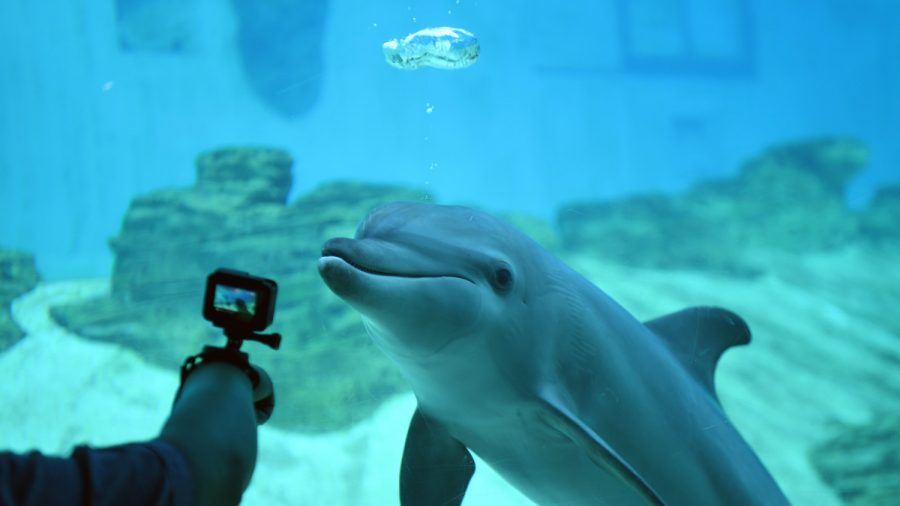In a public “intelligence update,” the British Ministry of Defense (BMD) said that the Russian Navy is “likely” training combat dolphins to intercept enemy divers.
The remarkable announcement features satellite photos of a Russian navy base at Sevastopol port in Crimea, and what the BMD believes to be marine mammal pens.
“Russia has trained animals for a range of missions, but the ones housed in Sevastopol harbour are highly likely intended to counter enemy divers,” the statement said.
The satellite photos showed nets, booms, and barges set up along the entrance of the naval base.
“Since summer 2022, the Russian Navy has invested in major enhancements to the security of the Black Sea Fleet’s main base at Sevastopol,” the BMD wrote on Twitter. “In recent weeks, these defences have highly likely also been augmented by an increased number of trained marine mammals.”
Russia’s Sevastopol base houses several important Russian warships, and it is a likely target for Ukrainian sabotage.
Though the naval base lies outside the reach of Ukrainian missiles, it was attacked by Ukrainian drones in April, igniting a Crimean oil depot and hitting three “unmanned boats,” according to Russia’s defense ministry.
The presence of trained dolphins at Sevastopol had already been reported by The U.S. Naval Institute (USNI) in April, when it released images showing two floating dolphin pens. The recent photos reveal additional pens located in the waters near the entrance of the base.
“In the Arctic north, Russia’s Northern Fleet uses different types of marine mammals. Beluga whales and seals, both with heavy layers of fat to keep warm, are better protected against the cold than the bottlenose dolphins used in the Black Sea,” the USNI reported at the time.
The U.S. Navy has been training dophins and sea lions since 1959. Initially, the Navy’s Marine Mammal Program, which began a year later, trained a variety of marine animals, including sharks, beluga whales, sea turtles, rays, and even marine birds.
Nowadays, the Navy relies on two species, selected for their trainability and adaptability: sea lions and bottlenose dolphins.
The Marine Mammal Program trains the animals to perform a variety of underwater tasks, including delivering equipment to divers underwater, locating and retrieving lost objects, guarding boats and submarines, and doing underwater surveillance using cameras.
Bottlenose dolphins have the most sophisticated natural echolocation senses known to man, exceeding the capabilities of electronic sonar, according to the Naval Information Warfare Center. In addition to their exceptional low-light vision, this makes them excellent at detecting and tracking undersea targets, such as enemy divers.
During the Vietnam and Persian Gulf wars, the U.S. Navy used bottlenose dolphins to tag enemy divers with tracking devices, according to a PBS documentary called “A Whale of Business.” The documentary also claimed that the dolphins were trained to shoot enemy swimmers, but the Navy denies this.
In 2021, a beluga whale with a camera attached to it, presumably from the Russian military, appeared on the coast of Norway.

